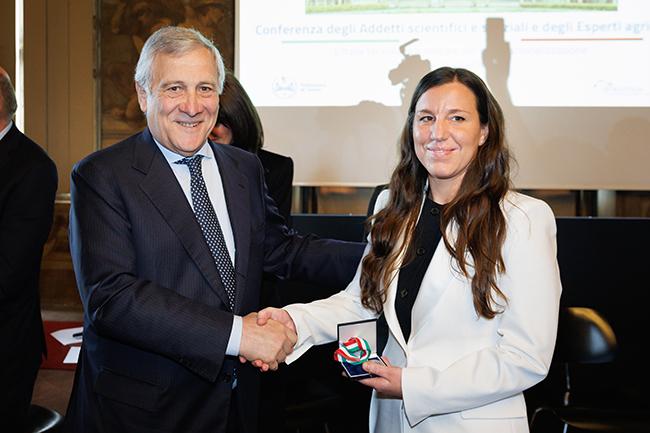ANSTO scientist Dr Stefania Peracchi, an expert in understanding the impact of radiation in space, has received a national award for Italian bilateral scientific cooperation at the 2024 Conference of Scientific Attachés in space and agriculture held in Turin Italy in April 2024.
The conference presented three awards to Italian scientists and entrepreneurs, who have demonstrated a contribution in the spirit of international scientific collaboration in the fields of space, agriculture and energy.
Stefania was awarded a medal in recognition of her achievements in space research throughout her professional career from her first appointment in Europe to working at ANSTO today.

Watch an interview with Stefania on the Embassy ofItaly in Australia LinkedIn page.
At a media conference following the event, she quoted Nobel Laureate physicist the late Richard Feynman, who wrote that the most successful scientist is the one who is not afraid not to know but embraces this limitation as freedom of thought. Stefania embraced that philosophy, valuing collaborations between scientists to learn, share and give continuity to the science, which would sadly die if confined to one scientist in their own lab.
"Space research was not my childhood dream, but a passion I built with dedication and curiosity. I love physics and when at high school I learned about relativity, the Einstein quote about the past, present and future being only illusions, got me into it. When looking at a star we are actually looking at a past event, while the present slips before our eyes, and future is already there; when we think we are made of the same atoms that make the universe, the same radiation that scares us, is what we are made of... isn't it crazy? Maybe this is what that led me to space research, or maybe simply a series of past, present and future events."
As an Accelerator Scientist at the Centre for Accelerator Science, Stefania is using precision ion irradiations through powerful particle accelerators to investigate the effects of space radiation on microelectronics, shielding materials, and the human body. With the support of the Australian Space Agency Agency and the National Collaborative Research Infrastructure Scheme (NCRIS), she is advancing the accelerators technologies to explore new solutions to reduce radiation effects for future space missions.
Stefania grew up in Italy and completed undergraduate and post-graduate studies at Milan's scientific-technological university, Politecnico di Milano, where she received a bachelor's degree in physics engineering and a Master's in Nuclear Engineering. She then started her career in France, working as a Nuclear Engineer and researcher at the French Institute for Radiological Protection and Nuclear Safety.
In 2017, Stefania made the move to Australia, to complete her PhD at the University in Wollongong, investigating the development and implementation of innovative radiation detectors for radiation protection purposes in space and avionics. Today, she works at the leading edge of space radiation research, placing Australia on the frontline of space innovation.
She has undertaken research at CERN, the Paul Scherrer Institute, and the Heavy Ion Medial Accelerator in Chiba, Japan. She travelled to Antarctic on flights to measure cosmic radiation.
Distinguished Professor and Director Centre for Medical Radiation Physics and School of Physics Anatoly Rozenfeld nominated Stefania for the award.
The Embassy of Italy in Australia and the Scientific Attache Dr Marco Lazarrino distributed information about the Stefania's selection.






